ARTS
Young Halifax engraver keeps ‘dying art’ alive
‘You have to sacrifice a lot of time and be super patient to be able to learn'
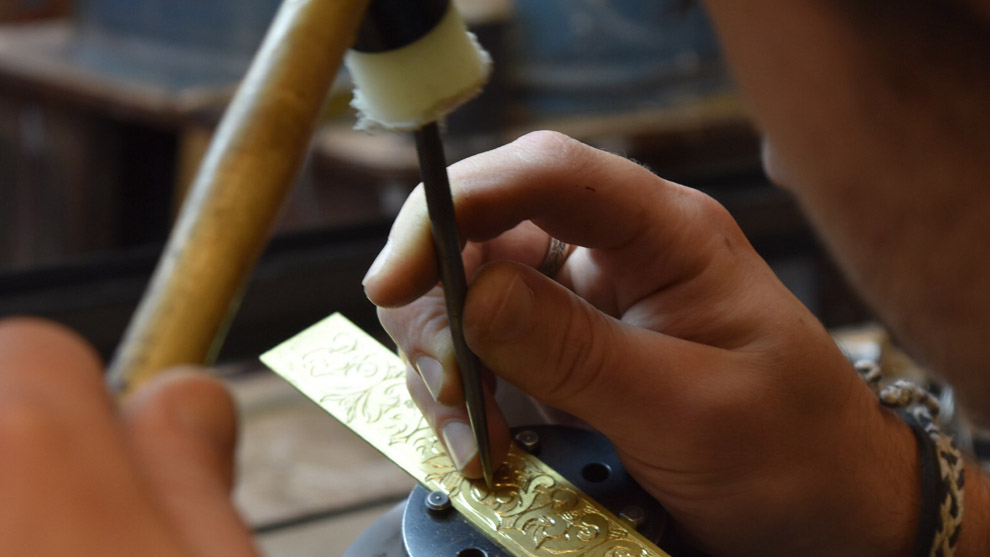
caption
Nicholas Rosin engraves a bracelet with a hammer and chisel.
caption
Nicholas Rosin engraves a bracelet with a hammer and chisel.From a 430,000-year-old doodle on a shell to a 400-pound laser machine, the art of engraving has come a long way.
“People say it’s a dying art,” says Nicholas Rosin, one of only a handful of people in Halifax who engrave by hand.
Rosin studied engraving in Germany while on a student exchange through NSCAD University in 2012. He’s been doing it ever since.
Engraving by hand gathered speed in Italy and Germany in the mid-1400s, and involves carving out designs from a piece of metal, like brass or steel, with a variety of wedge-shaped chisels.
The process can take anywhere from a few minutes to several days. Impact etching machines, which create an image with a diamond-tipped needle, and laser engravers are slowly replacing this type of art.
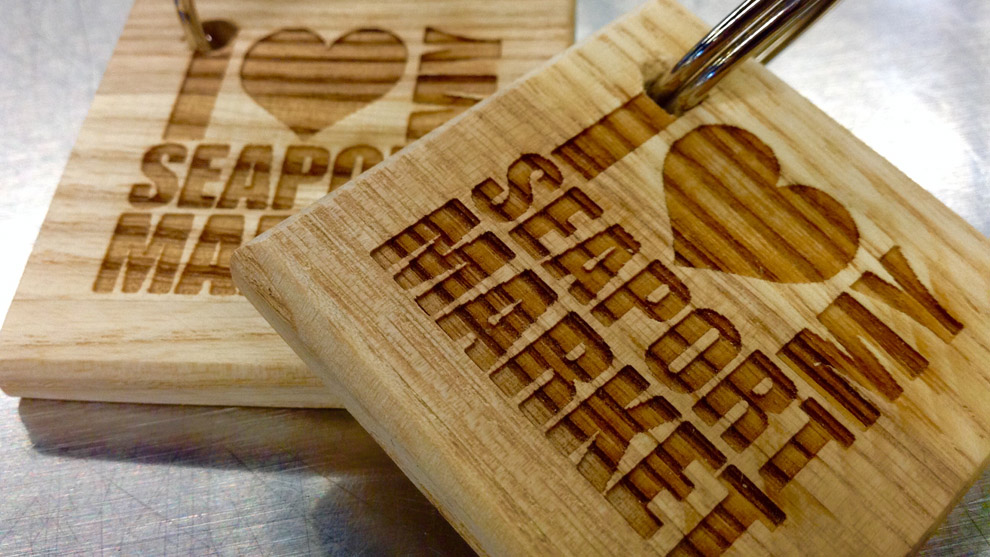
caption
Wooden keychains that were engraved using laser technology are displayed at the Halifax Seaport Farmers’ Market.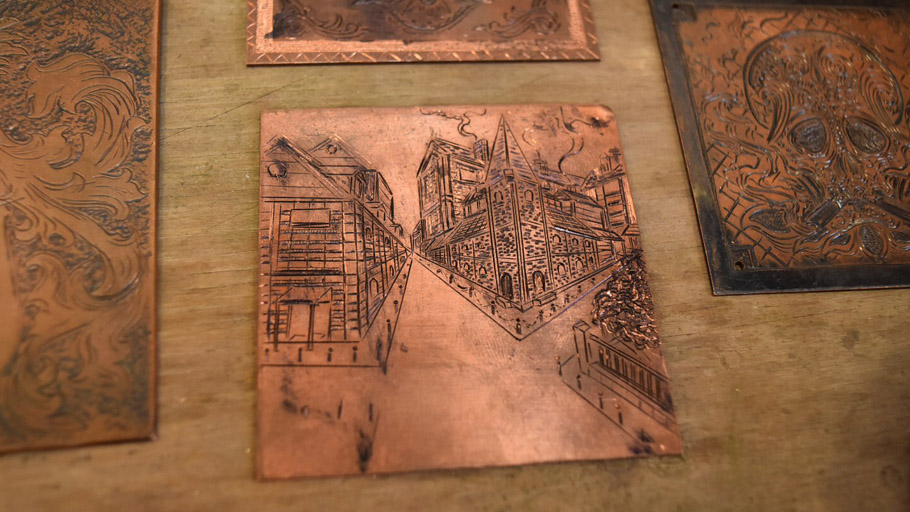
caption
Some of Rosin’s smaller pieces.“It’s become more affordable for people to just send it to … one of those ‘Things Engraved’ kiosks, but then you can totally tell that it’s machine-made,” says Rosin. “It looks like it came off right from a printer.”
Rosin finds engraving done by hand is special because it allows the artist to express their “personal flair” and adds a level of originality that isn’t possible with machines.
One of the most shocking things Rosin noticed after his return from Germany was the lack of mentors and resources for young engravers in Halifax.
“The people who actually do it are very helpful, but there aren’t many of them,” he says.
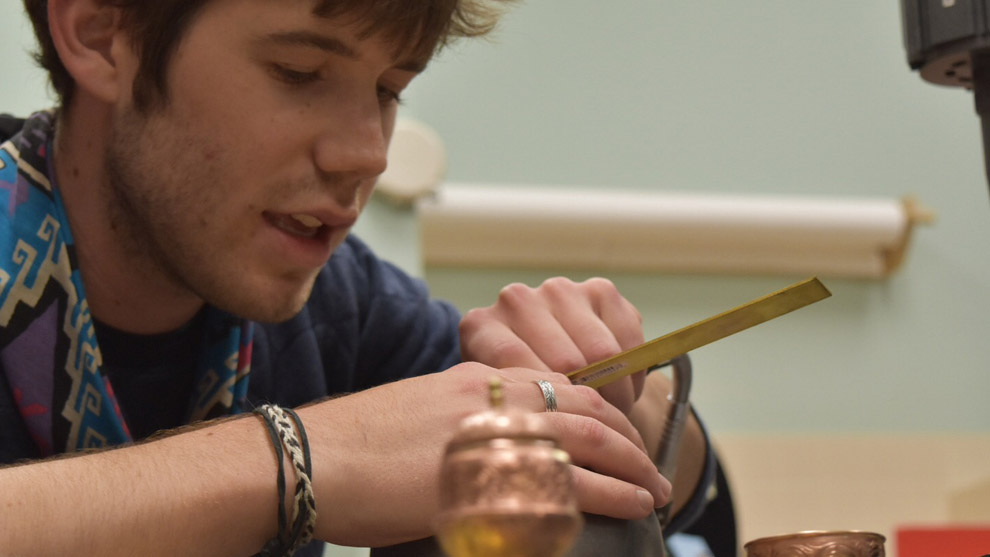
caption
One of Rosin’s current projects.Engraving by machine
The Keyosk on Barrington Street engraves using machines. Owner John Larkin says machines can do in minutes what would take hours to do by hand. His store specializes in objects like trophies, medals and keys, and mostly engraves metal, glass, plastic and wood.
But, Larkin admits, machines have their limitations.
“Machines are very efficient but they can’t do everything,” he says. “(The) inside of bracelets, for example, need a hand engraver.”
Other provinces
The lack of traditional hand engravers isn’t just a Halifax problem. It also affects those working in larger cities.
“There are no more engravers; it’s very difficult to learn this profession,” says Miroslaw Kruszynski, who runs Mirko Engraving.
“Young generations chose a different way, (so) they go to different trades. You have to sacrifice a lot of time and be super patient to be able to learn.”
Kruszynski is based in Toronto, but serves clients from all over the country.
Art for all ages
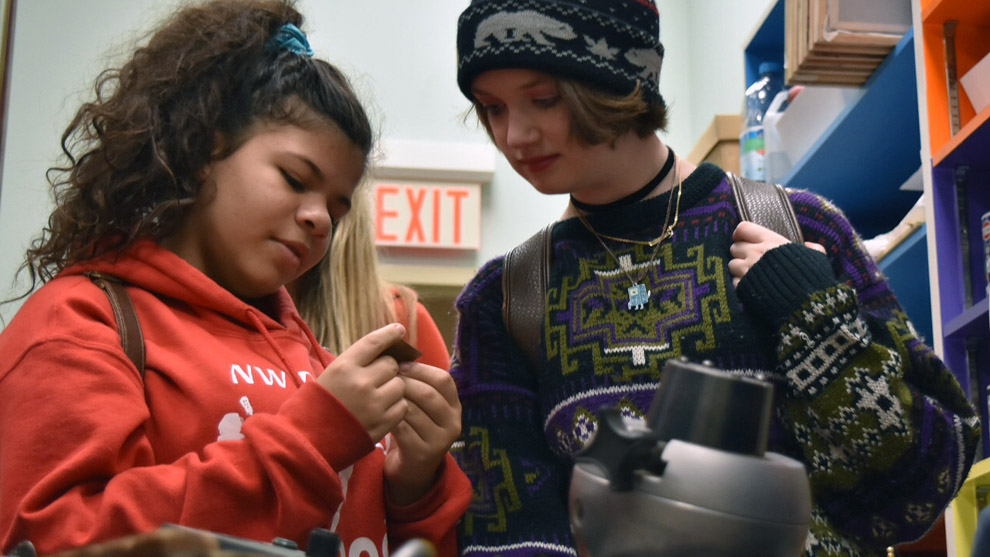
caption
Two girls check out some of Rosin’s work at Nocturne.Despite the being an older trade, engraving still interests younger people. Rosin had some of his pieces on display at Nocturne last weekend and says a wide range of people showed interest in his engravings.
Tanya Milne was among the crowd visiting Rosin’s display. She wore an engraved wedding ring that was modelled after a 1930s design.
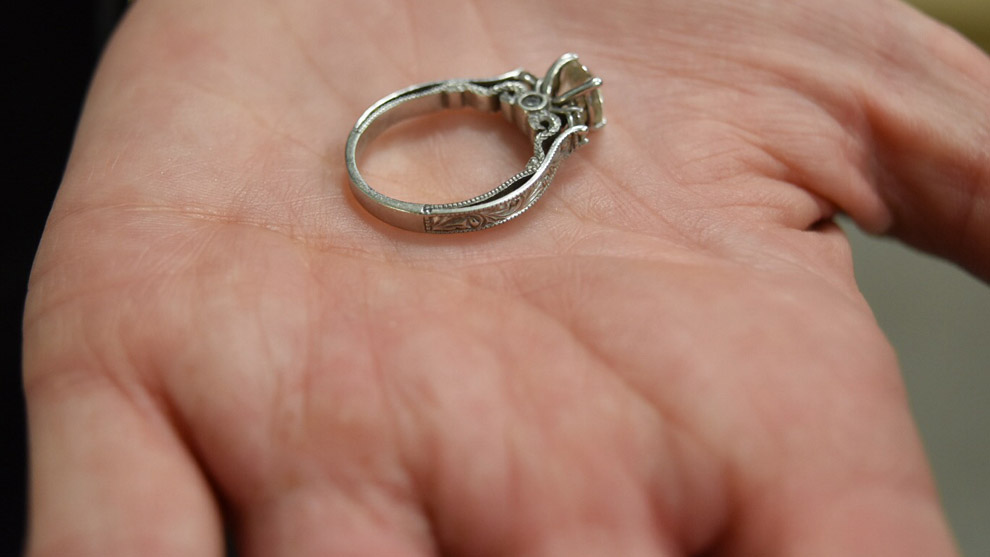
caption
Tanya Milne shows off her engraved ring.“I love engraved pieces because they’re classic and timeless,” she says. “They’ll always be timeless.”
The beauty of engraved rings is that they can look “vintage” but still be new, she says.
At 26, Rosin believes he is one of the youngest people in Halifax pursuing engraving as a profession.
“Most people I know who are doing it are well into their 40s, 50s and 60s,” he says.

caption
Rosin works on a project at Nocturne, wearing a ring he engraved himself.Rosin rents a small studio space at the Immigration Annex on Marginal Road. He says he is hoping to start a business that specializes in functional objects, like knives, cups and lidded vessels. He is also interested in engraving jewelry.

